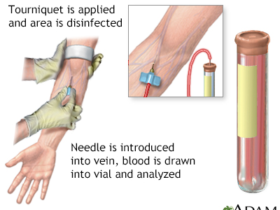Pink eye, or conjunctivitis, is a common eye condition characterized by inflammation or infection of the outer membrane of the eyeball and the inner eyelid. It typically results in redness, itching, and discharge from the eyes. However, several other conditions can present similar symptoms, leading to frequent misdiagnoses. Understanding these conditions is crucial for ensuring accurate diagnosis and appropriate treatment.

Allergic Conjunctivitis
One of the most common conditions mistaken for pink eye is allergic conjunctivitis. This type of conjunctivitis is triggered by allergens such as pollen, dust mites, pet dander, or mold. Unlike bacterial or viral conjunctivitis, allergic conjunctivitis is not contagious. Symptoms include redness, itching, and tearing in both eyes, often accompanied by nasal congestion and sneezing. Itching is a key differentiator, as it is more pronounced in allergic conjunctivitis than other forms of conjunctivitis. Treatment usually involves avoiding known allergens and using antihistamine eye drops or oral medications.
Blepharitis
Blepharitis is an inflammation of the eyelids that can be easily confused with pink eye due to overlapping symptoms such as redness, irritation, and crusting around the eyes. Blepharitis can be caused by bacterial infection, malfunctioning oil glands, allergies, or other skin conditions like rosacea. Unlike conjunctivitis, blepharitis primarily affects the eyelid margins and can result in skin flaking around the eyes. Treatment includes maintaining eyelid hygiene, using warm compresses, and sometimes antibiotics or anti-inflammatory medications.
Dry Eye Syndrome
Dry eye syndrome, or keratoconjunctivitis sicca, is another condition frequently misdiagnosed as pink eye. It occurs when the eyes do not produce enough tears or when the tears evaporate too quickly. Symptoms include redness, a gritty sensation, burning, and intermittent blurry vision, which can mimic those of conjunctivitis. However, dry eye syndrome is a chronic condition that worsens over time and does not involve infectious discharge. Management involves using artificial tears, lifestyle modifications, and treating underlying conditions contributing to dry eye.
Uveitis
Uveitis is an inflammation of the uvea, the middle layer of the eye, which can cause symptoms similar to pink eye, such as redness and pain. However, uveitis often presents with more severe symptoms, including light sensitivity, blurred vision, and dark floating spots in the vision (floaters). Uveitis is usually associated with autoimmune disorders, infections, or trauma. It requires prompt medical attention as it can lead to serious complications like glaucoma or cataracts. Treatment depends on the underlying cause but often includes corticosteroids and immunosuppressive agents.
Contact Lens-Related Issues
Wearing contact lenses can lead to a range of eye problems that may be mistaken for pink eye. Conditions such as giant papillary conjunctivitis (GPC) and contact lens-induced acute red eye (CLARE) can cause redness, discomfort, and discharge. GPC is characterized by the formation of large bumps on the underside of the eyelid, leading to itching and mucus discharge. At the same time, CLARE is often caused by overnight wear of contact lenses, resulting in redness and pain. Proper lens hygiene, switching to different types of lenses, and, in some cases, taking a break from lens wear are crucial for managing these issues.

Corneal Ulcers
Corneal ulcers are open sores on the cornea, often caused by infections, contact lens wear, or eye injuries. They present with symptoms such as redness, severe pain, tearing, discharge, and blurred vision, which can easily be confused with conjunctivitis. However, corneal ulcers are a more serious condition that can lead to vision loss if not treated promptly. Diagnosis typically involves a slit-lamp examination by an eye doctor, and treatment includes antibiotic, antifungal, or antiviral eye drops, depending on the underlying cause.
Subconjunctival Hemorrhage
A subconjunctival hemorrhage occurs when a small blood vessel breaks underneath the eye’s clear surface (the conjunctiva), resulting in a bright red or dark patch on the white of the eye. While it can look alarming, it usually doesn’t cause pain, discharge, or changes in vision, distinguishing it from pink eye. Subconjunctival hemorrhages are often caused by minor trauma, sudden increases in blood pressure from coughing or sneezing, or sometimes for no apparent reason. They typically resolve on their own without treatment.
Episcleritis
Episcleritis is an inflammation of the episclera, a thin layer of tissue between the conjunctiva and the sclera (the white part of the eye). It causes redness and discomfort, similar to pink eye, but without significant discharge. Episcleritis often affects one eye and may recur. The exact cause is often unknown but can be associated with systemic inflammatory conditions. Most cases resolve on their own or with the help of anti-inflammatory medications.
Ocular Rosacea
Ocular rosacea is an eye condition linked to rosacea, a chronic skin condition affecting the face. It leads to red, burning, and itchy eyes, often mistaken for pink eye. Additional symptoms include swollen eyelids, light sensitivity, and a feeling of having something in the eye. Treatment focuses on managing the underlying rosacea with oral antibiotics, eyelid hygiene, and sometimes steroid eye drops to reduce inflammation.
Foreign Body Sensation
The presence of a foreign body in the eye, such as dust, sand, or an eyelash, can cause redness, irritation, and tearing, mimicking the symptoms of pink eye. Unlike conjunctivitis, the discomfort usually improves once the foreign body is removed. Prompt removal and rinsing of the eye with saline or water are often sufficient, but persistent symptoms may require medical attention to prevent further complications.
Chemical Exposure
Exposure to chemicals, such as those found in cleaning products, smoke, or pollutants, can cause chemical conjunctivitis. Symptoms include redness, burning, tearing, and swelling, which can be easily confused with infectious conjunctivitis. The key to differentiation is the history of exposure to a chemical irritant. Immediate and thorough rinsing of the eyes with water and avoiding further exposure are essential steps in managing chemical conjunctivitis.
Misdiagnosis and Its Implications
Misdiagnosing these conditions as pink eye can lead to inappropriate treatments, prolonged discomfort, and potentially more severe complications. For example, using antibiotics for a condition caused by allergies or dry eyes will not only be ineffective but could also cause unnecessary side effects. Similarly, missing a uveitis diagnosis or a corneal ulcer can result in serious vision problems. Therefore, a thorough eye examination and detailed medical history are crucial for accurate diagnosis and effective treatment.

Conclusion
Understanding what is commonly misdiagnosed as pink eye is essential for healthcare providers and patients. While pink eye is a frequent and often minor ailment, other conditions with similar symptoms can be more serious and require different treatments. Recognizing the distinct characteristics of conditions like allergic conjunctivitis, blepharitis, dry eye syndrome, and others can minimize misdiagnoses, ensuring appropriate care and better outcomes for those affected. If you experience persistent eye redness and discomfort, it is important to consult an eye care professional to determine the exact cause and receive the correct treatment.
Also, Read the following: left hand bandaged hand at home.













Got a Questions?
Find us on Socials or Contact us and we’ll get back to you as soon as possible.